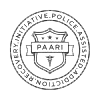
By LYLE R. FRIED, CAP, ICADC, CHC In Addiction Withdrawal
Posted January 27, 2015
Two Phases of Withdrawal
For those trying to break free from addiction, fear of withdrawal is a driving force keeping an individual locked in the deadly cycle. Depending on the drug and the current health of the addict, withdrawal symptoms are not only difficult, but can be deadly.
Drug and alcohol withdrawal symptoms can be broken down into two phases. There is acute and post acute withdrawal, or PAWS.
Acute Withdrawal
Acute withdrawal relates to the first stage of detox, when the body is reacting to the sudden absence of drugs or alcohol. Symptoms can vary greatly and last anywhere from a few days to several weeks. This first stage is where the physical symptoms of addiction withdrawal are most evident. Often, this portion of the recovery process is treated with medical detox.
Post Acute Withdrawal Syndrome (PAWS)
The second stage is referred to as PAWS, Post Acute Withdrawal Syndrome or protracted withdrawal syndrome. During PAWS, more emotional and psychological withdrawal symptoms are evident. This is where the roller coaster of emotions often begins.
PAWS can manifest as any or all of the following:
- Restlessness
- Emotional outbursts
- Mood swings
- Lack of clarity (foggy thoughts)
- Disturbed sleep
- Low enthusiasm
- Anxiety
- Tiredness
- Memory loss
- Irritability and anger
- Impulsive behavior
- Cognitive impairment
- Restless legs
- Boredom
- Depression-mimicking symptoms
Many recovering addicts are unaware of this second phase. Lack of knowledge can be a huge contributing factor to relapse. Just think about it, if you’re unaware of the roller coaster of emotions and mental fog you’re about to face, you can begin to feel like a failure. Pressure to perform in a “normal” fashion can be high. Without a strong and knowledgeable support group, many recovering addicts give up “before the miracle happens,” as they say in recovery meetings.
So, let’s explore this second phase of addiction withdrawal and address some of the questions that usually accompany it.
How Long Does Post Acute Withdrawal Syndrome Last?
In order to understand the length of time addiction withdrawal symptoms may last, it’s important to discuss what’s actually going on in the brain. Because drug and alcohol addiction hijacks the brain’s reward circuits, which normally respond to natural behaviors linked to survival, like eating, nurturing others or as a reaction to pain, the sudden loss of the drug throws the body into the process of compensating and adapting to this loss.
Fortunately, the human body has a remarkable ability to heal itself. It’s constantly trying to understand and adapt to whatever it is faced with. Think about what happens when we go on an extremely restrictive and nutritionally bankrupt diet. Our body immediately assesses the situation and takes precaution against starvation by slowing our metabolism. Of course, this frustrates the dieter, but it proves that our body is always working on our behalf, to save and sustain us.
With drug and alcohol addiction, it takes time for our brain to “start the factory up” and for the reward pathways to begin working at normal levels without interruption from drugs or alcohol.
Many medical studies point to a time period of up to two full years before neurochemistry levels recalibrate and nerve conduction parameters return to a normal, pre-addiction state.
What Can I do to Help Relieve the Symptoms of Post Acute Withdrawal Syndrome?

We can play a very important role in the recovery process by choosing to participate in activities that boost the deficient neurotransmitters and decrease the amount of time it will take to achieve a mental state that’s actually better than we were before or during active addiction.
This is not a comprehensive list. There are many activities that trigger a reward and provide a boost to deficient neurotransmitters. Here is a great starting point that will put some science behind some of the things you may already be doing.
Natural Ways to Rebuild Neurotransmitter Systems
- Accomplishing a Task – That’s right. Any type of accomplishment, small or large fosters a feeling of pride and triggers a “feel good” reward. So, there’s something to be said for writing out to-do lists and checking off the boxes. Each one triggers a chemical release.
- Music – Upbeat, positive music can definitely get your brain chemicals working again.
- Meditation – Meditation produces endorphins and serotonin, providing feelings of calm and well-being.
- Prayer and Spiritual Connection – According to studies reported by the National Center for Biotechnology Information, prayer activates positive results that range from increased serotonin and melatonin levels to spontaneous remission and healing of diseases.
- Laughter – Want to get your neurotransmitters up quickly? Choose a comedy over a drama or tear-jerker. Laughter releases endorphins and gives you an immediate boost.
- Sunshine – Spending 20 minutes in unfiltered sunlight per day aids serotonin production.
- Exercise -The trifecta, exercise produces serotonin, dopamine and endorphins. Rigorous exercise is best because the stronger the physical demand placed on your body, the greater the release of endorphins. Weight training and aerobic activity are best. Push yourself and work out as long as you can for best results.
Therapy Based Ways to Rebuild Neurotransmitter Systems
- Acupuncture Therapy – Stimulates the release of endorphins and increases circulation.
- Chiropractic Adjustments – When the spinal chord and its nerves are in proper order, neurotransmitters are released in a specific sequence, resulting in a state of well-being. However, subluxations or misalignments of the spine interrupt the feel-good sequence. Chiropractic adjustments can reduce the time of PAWS significantly.
- Massage Therapy – Stimulates the release of endorphins, increases dopamine and serotonin, and decreases cortisol.
- Amino Acid Replacement Therapy – Reduces or eliminates excessive desires for unhealthy behaviors and pleasure-inducing substances, including psychostimulant use, alcohol abuse, and excessive food cravings. Amino Acid replacement therapy helps promote optimal dopamine function; normalizes satiety and pleasure satisfaction from normally enjoyable activities; improves energy regulation, reduces stress, promotes well-being, and increases feelings of happiness.
This list will get you on the right path to regulating neurotransmitter levels and reducing the symptoms associated with PAWS.
Addiction recovery makes more sense when we realize what we’re going through, doesn’t it? All the little tips, like, “No dating in the first year,” and “Don’t sponsor anyone until you have two years clean and sober,” actually have science behind them. These suggestions aren’t punishment. They are part of a protective plan to help a person in early recovery avoid relapse.
For more information on well being, avoiding relapse and speeding up the addiction recovery process, check out The Connection Between Sugar and Drug Addiction Relapse.
If you are currently struggling with drug or alcohol addiction, don’t wait for things to get better on their own. Take action today. Our experienced addiction specialists are always ready to help you.












